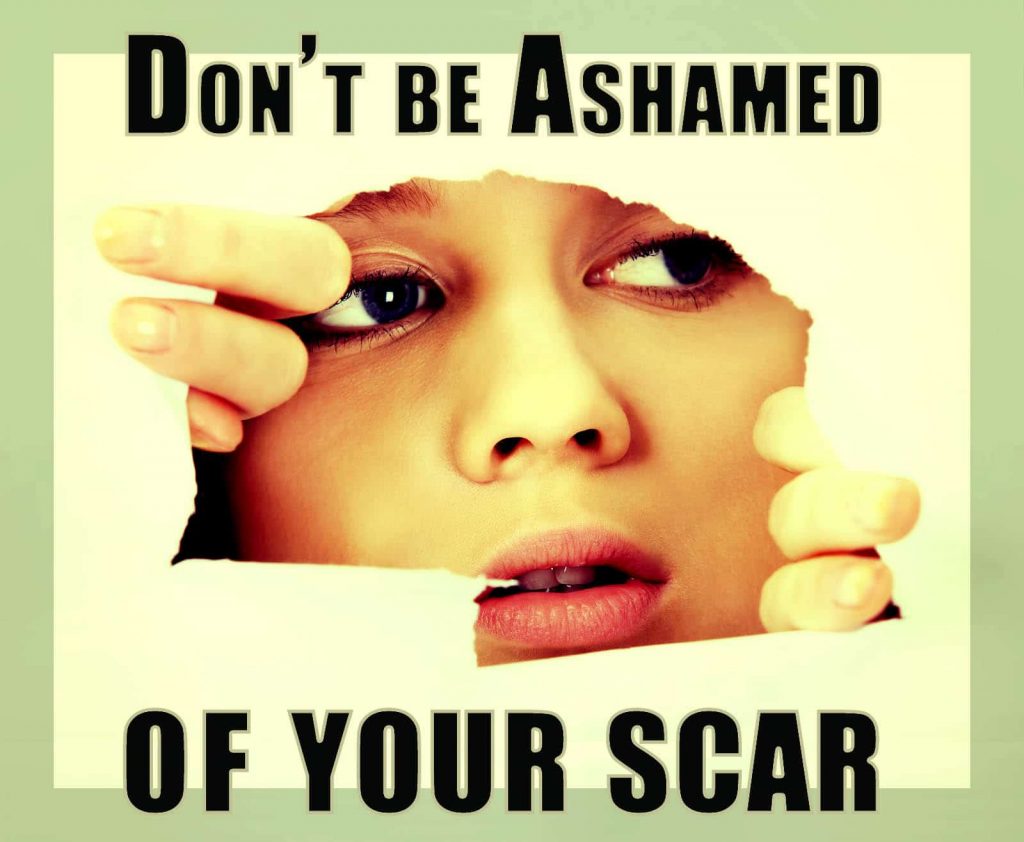Scars are part of life but they can be considered unsightly to most people. This is especially true when they happen to a celebrity figure. Celebrities are known to have the brightest smiles, flowing hair and flawless skin. Yet, a scar can change a person’s life and even the career of a person. However, scars can also be a reminder of survival from a trauma or surgery. One Beverly Hills reality TV star experienced a terrible ordeal and lived to tell about it. Not only that, she learned to embrace her life and the scar that came from that fateful night.

Shortly after Katie Maloney started working at Sexy Unique Restaurant (SUR) on Vanderpump Rules in November of 2009, she fell through a skylight during a party. The drop was nearly three stories as she smashed through a plate-glass window and toppled down a flight of stairs. Katie suffered cuts, bruises, a broken jaw, a broken collarbone and minor brain injury. It was a miracle that she survived this horrendous accident and was able to move on with her life. Her husband, Tom Schwartz, told Bravo TV that he celebrates her life every year on the anniversary of her accident.
Unfortunately, the eyes of the public and other celebrity figures are not always kind. Designer Kevin Lee, who is one of Lisa Vanderpump’s friends, verbally bashed Katie’s appearance on an episode of Vanderpump Rules. During the show, the group was at a magazine party and Kevin called out Katie’s weight. However, Katie’s castmates and friends had her back. Lisa Vanderpump referred to Katie as one of the most beautiful girls in the restaurant. That night, Lisa even tweeted words of encouragement to Katie. The tweet was followed by words of praise from friends and fans from all over the world.
The physical body does not always show the emotional trauma that some carry with them after an accident. Thankfully, some people are able to look past the changes to the body and accept the scars that life gives them. Katie feels that cheating death put everything into perspective for her. While she could go to a doctor and have scar revision surgery, she feels that the surgery would erase this monumental moment in her life. Katie has also stated that she likes her scar because it gives her character. She even considers it a badge of honor that shows she is still here.

 When Camille Grammer, one of the stars of the Real Housewives of Beverly Hills, learned she had cancer for a second time, she revealed her diagnosis to her followers on Instagram. She included a thank you note to her doctor as well as a warning to women. “Thank you Dr. Beth Karlan for removing those pesky cancer cells. You are amazing!” Camille posted a photo of herself and her doctor at the hospital, “This is my second cancer diagnosis. Thank God, we found it early. (squamous cell carcinoma).” Camille continued by saying, “Early detection is key. My cancer was removed and I’m resting at home.” She went on to say, “Ladies listen to your bodies. If something doesn’t seem right go for a checkup. Don’t put it off. Annual checkups are important.”
When Camille Grammer, one of the stars of the Real Housewives of Beverly Hills, learned she had cancer for a second time, she revealed her diagnosis to her followers on Instagram. She included a thank you note to her doctor as well as a warning to women. “Thank you Dr. Beth Karlan for removing those pesky cancer cells. You are amazing!” Camille posted a photo of herself and her doctor at the hospital, “This is my second cancer diagnosis. Thank God, we found it early. (squamous cell carcinoma).” Camille continued by saying, “Early detection is key. My cancer was removed and I’m resting at home.” She went on to say, “Ladies listen to your bodies. If something doesn’t seem right go for a checkup. Don’t put it off. Annual checkups are important.” When it comes to plastic surgery, the scars after the procedure vary from person to person. There are many factors which influence healing after surgery and the way we scar. The
When it comes to plastic surgery, the scars after the procedure vary from person to person. There are many factors which influence healing after surgery and the way we scar. The 

 It is very important to keep the wound properly cleansed. Gently wash the wound with a mild soap and lukewarm water to get rid of germs and remove debris. If dirt and particles remain in the wound after a thorough washing, use tweezers to carefully remove them. Be sure to clean the tweezers with alcohol before removing the fragments. A wound that is clean will heal quicker, neater and is less likely to develop into a scar than one that becomes infected. Hydrogen peroxide and rubbing alcohol are not recommended since alcohol can be irritating to damaged skin and hydrogen peroxide destroys white blood cells needed to repair the wound.
It is very important to keep the wound properly cleansed. Gently wash the wound with a mild soap and lukewarm water to get rid of germs and remove debris. If dirt and particles remain in the wound after a thorough washing, use tweezers to carefully remove them. Be sure to clean the tweezers with alcohol before removing the fragments. A wound that is clean will heal quicker, neater and is less likely to develop into a scar than one that becomes infected. Hydrogen peroxide and rubbing alcohol are not recommended since alcohol can be irritating to damaged skin and hydrogen peroxide destroys white blood cells needed to repair the wound. After surgery, the body uses its ability to create scar tissue to heal the new wound. However, excess scar tissue beneath the skin can be troubling even after the wound has healed. The tough, fibrous tissue can cause pain and significantly reduce function or range of motion. This decrease in function may transpire due to the direction of the incision and/or the depth of the wound.
After surgery, the body uses its ability to create scar tissue to heal the new wound. However, excess scar tissue beneath the skin can be troubling even after the wound has healed. The tough, fibrous tissue can cause pain and significantly reduce function or range of motion. This decrease in function may transpire due to the direction of the incision and/or the depth of the wound. Microdermabrasion is for all skin types and can benefit a person who has:
Microdermabrasion is for all skin types and can benefit a person who has:
